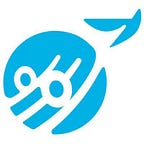When Elephants Fight: Why We Need More Sustainable Community Organizing
By Diana Skelton (France)
photo courtesy of flickr user Rainbirder
“Why are you wasting time by reaching out to people who can’t be bothered to come to meetings, or who don’t dare open their mouths? You’re bottom-dragging.”
I was shocked when I heard the words “bottom-dragging,” a terribly insulting way to refer to efforts to connect people with one another. The questions, asked of us by community organizers about ATD Fourth World’s work in Brooklyn, pinpoint one of our fundamental disagreements with them. Ever since Saul Alinsky founded the Industrial Areas Foundation in 1940, community organizing has become a tool for bottom-up change in neighborhoods around the world. But people living in the worst situations of poverty are often not part of the groups through which IAF works.
Our own goal at ATD Fourth World is not simply to reach the worst-off, but to design all our programs together with them. Without their collaboration, no matter how much a community progresses, someone will always be left behind. One of our members in Switzerland, Nelly Schenker, puts it this way:
If we stop in our tracks and turn to go see someone who is behind us on the road, it’s not because we are going backwards. It’s because that person has an experience and a knowledge that none of us has. We are still going forward, toward a society where we can learn from everyone’s unique experience.
While some community organizing groups, fortunately, do agree on the importance of reaching excluded people, the very foundations of Alinsky’s approach seem ill-adapted for that purpose. They require identifying enemies, and then finding ways to force concessions from the enemy, such as ridicule, the power of numbers, pressure and threats. This is what brings me to elephants. As the proverb says, “When elephants fight, it is the grass that suffers.”
Even long disenfranchised communities can sometimes manage to harness enough collective strength to take on the more powerful elephants of policy-making institutions. But when that is done in a confrontational way, in our experience, it often leads to negative consequences for people isolated on the margins of the disenfranchised communities.
The same inequality that creates a wealthy 1% also creates a very different 1% at the bottom. Within low-income communities, there are always some people whose situation is even more difficult than their neighbors’. Their lives may be too heavily burdened or too chaotic for them to attend meetings. If they do manage to attend, they may be unsure that what is on their minds will be understood by others, or even that they will be respected. And if they have not taken part in community organizing, it is very likely that the ensuing confrontations will simply leave them behind, or even worsen their situation.
So what can all of us do to move forward together?
There is also a new tool to support community organizers for creating dialogue with people in extreme poverty. This dialogue should ensure that collective action begins with their concerns and their voices. It should also empower them to inform choices about risks concerning confrontational approaches that might turn against them. This tool is a handbook for implementing the UN Guiding Principles on Extreme Poverty and Human Rights. The handbook is a draft currently being field-tested. Please let us know if you or a group you know would like to join in the field-testing, which is being carried out now through November 30th.
